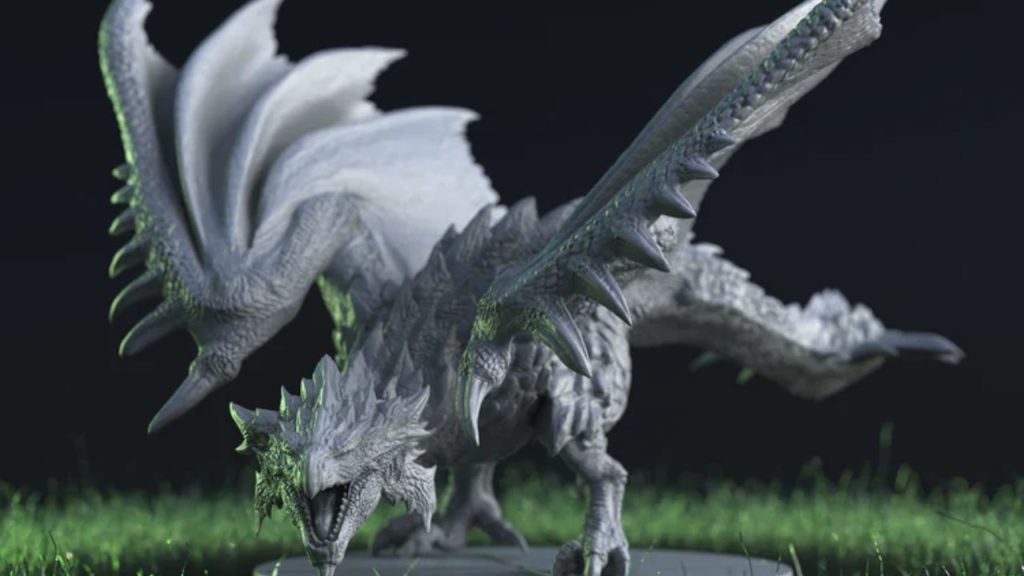Monster Hunter World: The Board Game review
As someone who didn’t get into Monster Hunter until World, and then spent nearly 2000 hours in it across a few different versions, I don’t consider myself an authority on the greater franchise but I know Monster Hunter World (and Rise) pretty well. Which I assumed would stand me in good stead for tackling Monster Hunter World: The Board Game. I was partly right, as I went into it with at least a grasp of the mechanics – but I still wasn’t prepared for the level of complexity and detail that Steamforged Games have poured into this.
It’s important to note right away that most of what makes this game so good is that complexity. Steamforged Games have managed to incorporate almost every mechanic from the video game to some degree or another, from using the Scoutflies to carving and crafting. It’s much more limited in terms of weapon classes and monster variety of course, with only four hunter types and five monsters (with two using the same miniature), but there’s also a ton of replayability and the option to grind multiple hunts for materials just like the video game. The real witchcraft here is that it feels almost as thrilling.
The campaign is designed to last for 25 in-game days, with each day consisting of three phases: Gathering, Hunting, and HQ. The Gathering phase comes after the initial set up, which itself feels daunting at first. Each player has a miniature, a stamina board, and a set of cards depicting their starting gear (which can be upgraded, replaced, or swapped out), their available attacks, and their damage cards. A detailed quest book provides a variety of quest scenarios set out like Choose-Your-Own Adventures, which give you opportunities to track the monster and gather resources. Higher level quests offer tougher, more dangerous choices but more rewards. If you don’t feel like questing, the book also contains multiple one-shot Arena Quests to simply fight the monster.

You keep track of what you earn and find, including materials for crafting and potions of which you can only carry three for the whole party, regardless of how many are playing. This and the three-failure system carried over from the main franchise mean it can sometimes be more beneficial to play solo – it’s just not quite as much fun. If you do play with only one or two Hunters, though, the game allows you to bring a Palico that can provide a huge boost for a limited number of turns.
Each quest is timed using Time Cards, which you discard at set points in the Gathering phase and after every player turn during the actual hunt. When you run out of Time Cards, you fail the hunt. Here you’ll also track the monster, pooling Track Tokens which will eventually be used to determine which special attack the monster has in its repertoire when you face it. Generally speaking, the longer you spend tracking it, the less deadly its special attack will be.
Once you end the Gathering phase, also referred to as the Adventure, it’s time to face the monster head on. You’ll now position your Hunters and the monster on the board. The monster always attacks first, and uses an attack drawn randomly from a deck of 11 Behaviour Cards. The monster’s behaviour directly determines what each Hunter can do in their turn, down to how many of them can act and how many attack cards they can play. Attack cards in turn determine how much damage is done to the monster, but must be “spent” by placing them on the stamina board in order to do things like dodge or sprint. When you are out of attack cards, you’ll need to wait until the resolution of a Time Card or other attack card clears your board.

Alternatively you can choose to drink a potion to clear your board and refill your health, or sharpen your weapon which refunds all your damage cards. These are drawn in a number designated by the attack cards you’ve played. It sounds more complicated than it is in practice, and once you reach the combat phase it’s tense, exciting, and fast-paced, requiring careful resource management and the occasional massive risk to defeat the target. It’s helped by the board artwork really setting the scene and the miniatures themselves, which are highly detailed and representative. Incidentally, the Wildspire Wastes expansion adds several monsters for the Wastes, and four additional Hunters which can be used in the Ancient Forest set.
If you cart three times or run out of time cards, it’s game over, but if you manage to defeat the monster you can reap the rewards by carving. This is handled with a roll of the dice, with extra rewards given for breaking monster parts during the fight. Heading into the HQ phase allows you to use the resources you’ve gathered to craft better gear, represented by different cards, and get tougher ready for the next encounter. The overall goal here is to take on a Tempered Azure Rathalos, which will take a lot of upgrades and grinding, something that feels wonderfully true to the video game franchise.
While a few of Steamforged Games board game adaptations can be hit and miss (the Dark Souls RPG, for example) they’ve truly hit the Jagras on the head with Monster Hunter World: The Board Game. It’s a fantastic, thrilling representation of the video game that’s only held back by its level of complexity. Again though, this is something that will fall away after a few hunts. The artwork, miniatures and mechanics come together to create a superb sense of atmosphere that masterfully recreates the video game experience, even down to the dynamic encounters and replayability.




